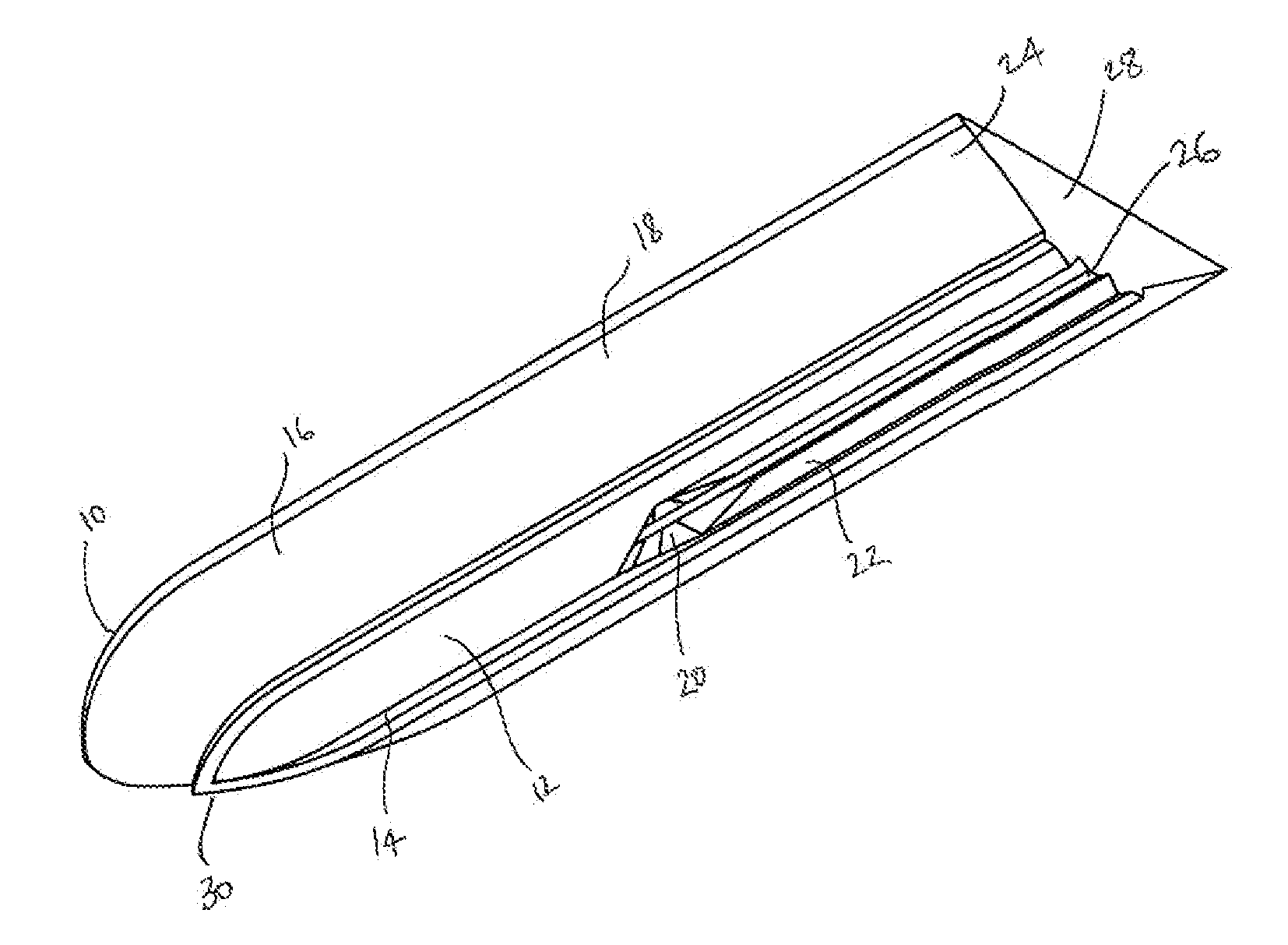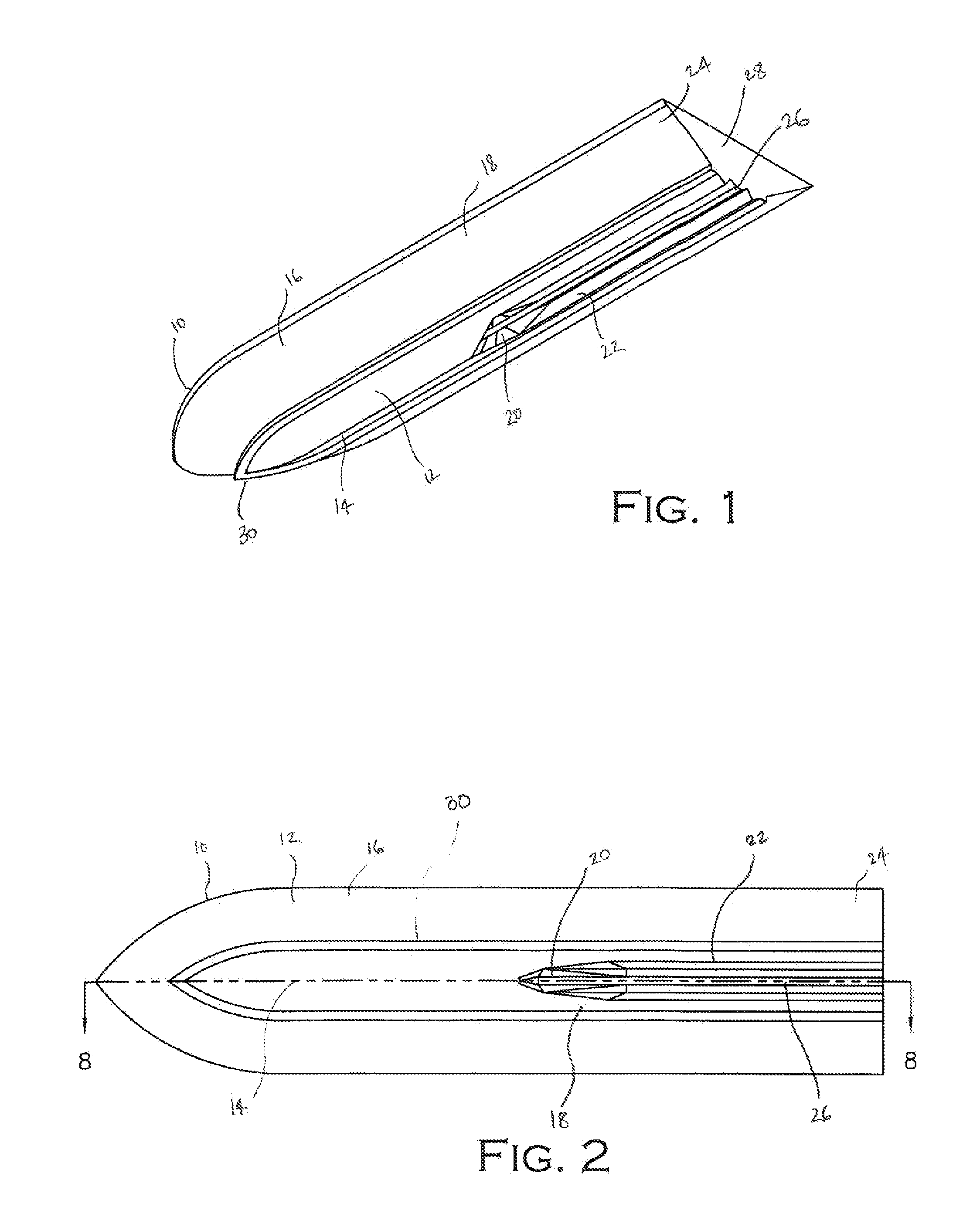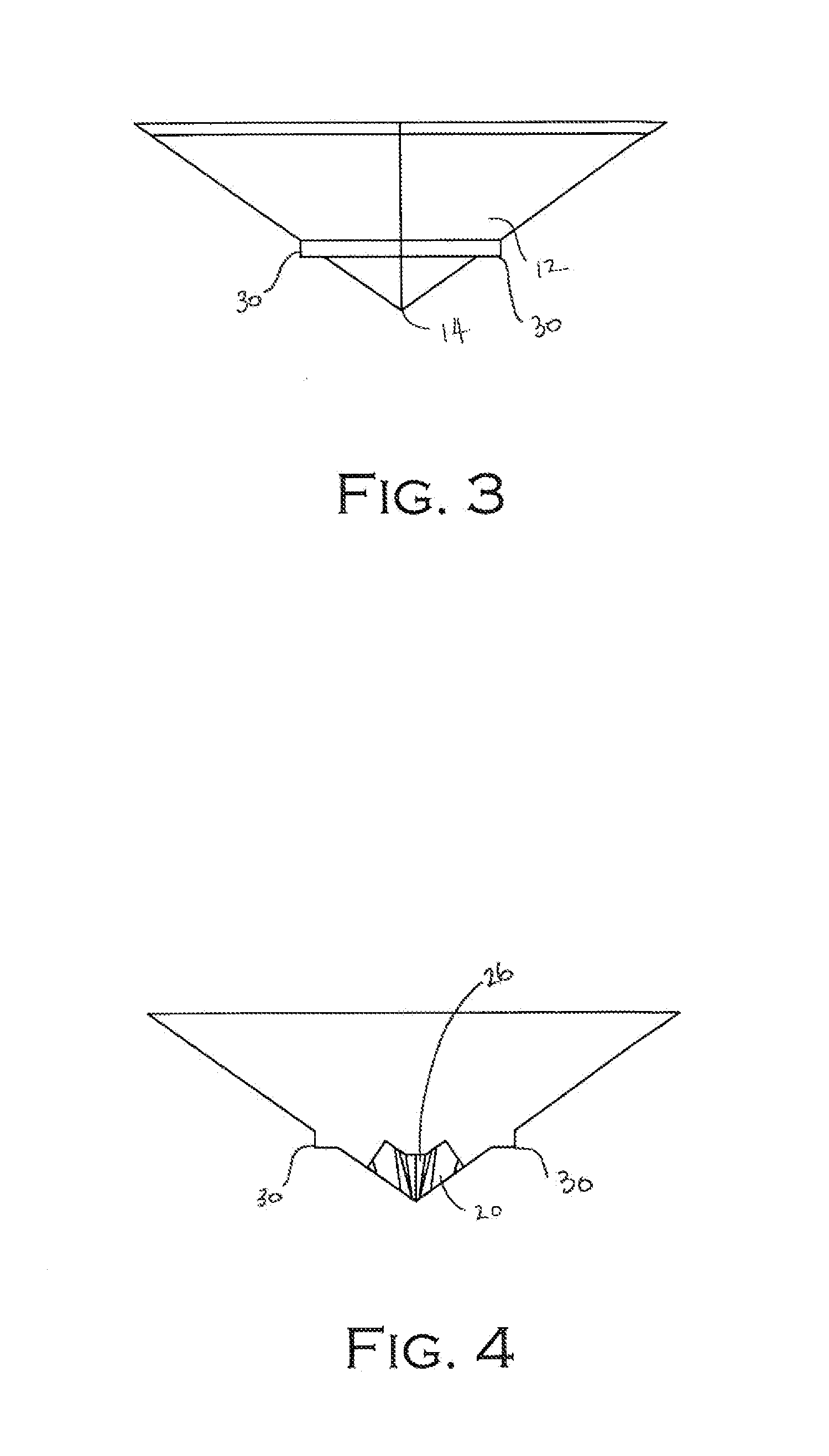Watercraft hull and associated methods
a technology for watercraft and hulls, applied in waterborne vessels, floating buildings, vessel construction, etc., can solve problems such as excessive angle of inclination, directionally unstable, and flat-bottomed planing hulls, and achieve the effect of minimal water resistan
- Summary
- Abstract
- Description
- Claims
- Application Information
AI Technical Summary
Benefits of technology
Problems solved by technology
Method used
Image
Examples
Embodiment Construction
[0030]A watercraft using a watercraft hull 10 according to the present invention can advantageously achieve minimal water resistance, resulting in higher performance and improved fuel economy. The system according to the present invention also advantageously provides the watercraft hull 10 with greatly increased directional stability. The system according to the present invention further advantageously provides a watercraft hull 10 that achieves greater lift. The advantages of the system according to the present invention may be realized whether operating a watercraft having a completely newly fabricated watercraft hull 10 according to the present invention or operating a watercraft having a retrofitted watercraft hull 10 according to the present invention.
[0031]Referring now to FIGS. 1-9, details of the watercraft hull 10 according to the present invention are now described in greater detail. The watercraft hull 10 according to the present invention advantageously allows a user to ...
PUM
 Login to View More
Login to View More Abstract
Description
Claims
Application Information
 Login to View More
Login to View More - R&D
- Intellectual Property
- Life Sciences
- Materials
- Tech Scout
- Unparalleled Data Quality
- Higher Quality Content
- 60% Fewer Hallucinations
Browse by: Latest US Patents, China's latest patents, Technical Efficacy Thesaurus, Application Domain, Technology Topic, Popular Technical Reports.
© 2025 PatSnap. All rights reserved.Legal|Privacy policy|Modern Slavery Act Transparency Statement|Sitemap|About US| Contact US: help@patsnap.com



